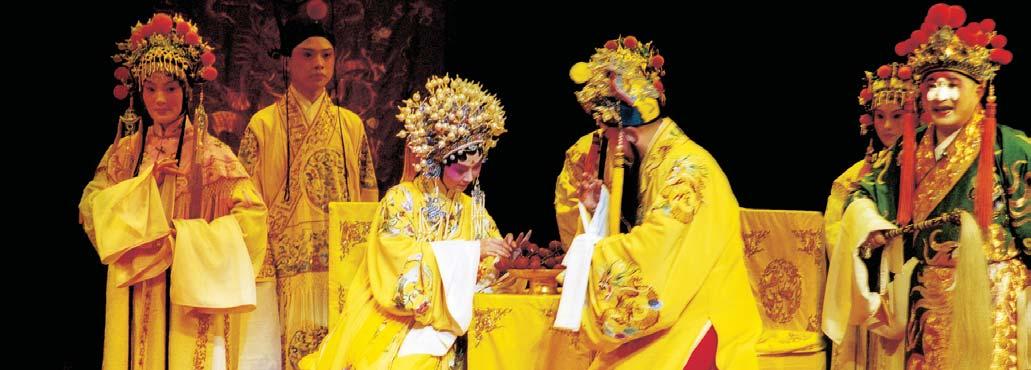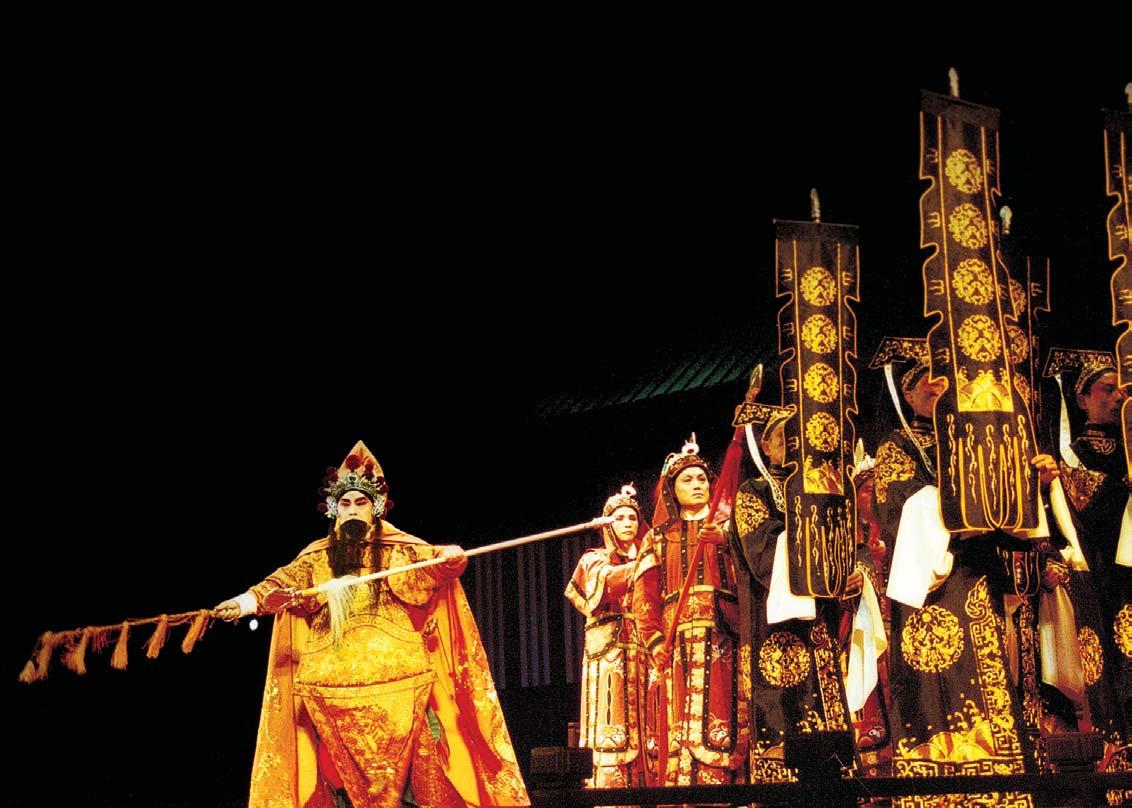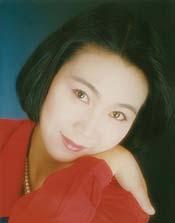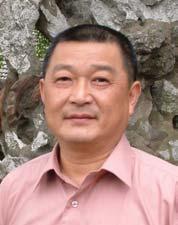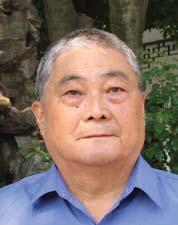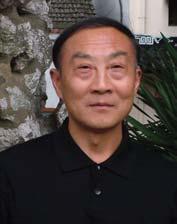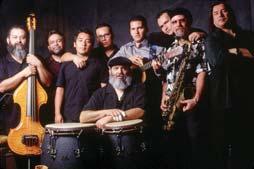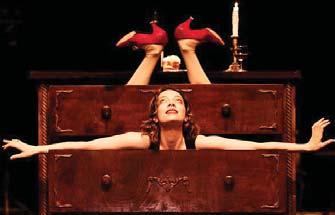Message from the Executive Director
The starting point for the programming of this 2005 Festival was the idea of contrasting opposites – ‘sacred and profane’. Both of these elements are rich sources of creative impulses for the performing arts in most cultures and this thematic link is evident in much of our programming. We hope these connections and contrasts will make your Festival experience more engaging and memorable.
Alongside all of our international artists, we are proud to present many outstanding Hong Kong artists. For example, the Hong Kong Philharmonic Orchestra and the Hong Kong Repertory Theatre, as well as the fine young Hong Kong musicians, pianist Rachel Cheung and the Fresh Air Brass Quintet. Other important Hong Kong artists taking part include Cantonese opera stars Mui Suet-see and Lee Lung; Class 7A Drama Group; Chung Ying Theatre; Group 89268; the Material Girls; choreographer Daniel Yeung and the remarkable combined talents of Lee Chun-chow, Faye Leong, Gabriel Lee and Chong Mui-ngam in The French Kiss
In addition, our commitment to commissioning new work from Hong Kong and around the world continues, with pieces such as Amber, The Nightingale, All That Shanghai Jazz, Material Girls, i-City, The French Kiss, Come Out & Play and Little Prince Hamlet
The 2005 Festival will offer a total of 124 performances with 42 performing groups (32 overseas and 10 local), two exhibitions and our Festival Plus programme of talks, seminars and meet-the-artist sessions.
This is one of our largest Festivals to date, in terms of the number and the diversity of programmes. I am sure too, that it will be one of our most enjoyable and inspiring. We are delighted that you could join us.
Douglas Gautier
/ Performance Supervisor / Chief Director / Associate Producer
For programme details 15.3.2005Page 23
16.3.2005Page 29
17.3.2005Page 35 2 45
Running time: approximately 2 hours and 45minutes, including one interval
Lyric Theatre, Hong Kong Academy for Performing Arts 15 - 17.3.2005
Sung in the Kun Singing Style with Chinese and English surtitles
Hong Sheng Gu Duhuang
To make this performance a pleasant experience for the artists and other members of the audience, PLEASE switch off your ALARM WATCHES, MOBILE PHONES and PAGERS.
Eating, drinking, smoking, unauthorised photography and audio or video recording are forbidden in the auditorium. Thank you for your cooperation.
Original Playwright
Adaptor
Production Team
Producer Chen Qide
Chief Producers Zhou Xiangqun and Zhu Yongxin
Associate Producers
Executive Producers / Directors
Chief Coordinators
Miao Xuewei and Gao Fumin
Zhang Shanhong and Tang Chisun
Cheng Congwu and Qiu Huixia
Coordinator Cao Shaohua
Coordinator / Public Relations
Gu Keren
Adaptor / Performance Supervisor / Gu Duhuang
Chief Director / Associate Producer
Costume and Stage Designer
Performance Director
Stage Manager
Directors
Director / Make-up
Tim Yip
Wang Qimei
Zhou Qingxiang
Zhu Qiang, Chen Bei, Zhu Shougen
Xiong Tianxiang, Li Guangrong
Zhu Liying
Deputy Set Designer / Make-up Supervisor Chan Ming-long Set and Property Production Manager Li Zhiming
Costume Production Manager
Costume Supervisor
Production Manager
Xu Shuzhen
Mandy Tam
Xu Peishan
Wardrobe Wang Sufang
Make-up
Headpieces
Property
Property / Stagehands
Fu Xiaoling and Zhu Liying
Zhu Jianhua and Gao Xuesheng
Xiao Zhonghao
Shi Qingfeng
Sound Shi Zuhua and Xu Anping
Lighting Ji Maolian
Stagehands
Public Relations
Photographers
Surtitles Operator
English Surtitles
Co-production
Adviser
Consultants
Li Qiang
Yin Jianmin and Su Jianren
Chen Pengchang, Yu Jingping and Zhang Jiajie
Xu Liang
Wang Rongpei
Jianhui Cultural & Educational Foundation
Rock Publishing International
Suzhou Kun Opera Theater of Jiangsu Province
Kunju Museum of China
Kun Opera School of China
Du Guoling
Wang Anqi, Wang Ayling
Li Liheng, Serina Chen
Becky Cao, Gu Huaiqun
Dong Yangzi, Jia Xinyuan
Cai Xinxin, Jiang Xun
Premiere February 2004, Taiwan
Cast
Emperor Tang
Lady Yang (Yang Yuhuan)
Eunuch Gao
Yang Guozhong
An Lushan
Chen Yuanli / Old Peasant
Guo Ziyi / Musician
Yongxin
Niannu
Military Scout / Blind Old Woman
Yang Tongyou / General
Changé / Duchess of Han
Zhao Wenlin
Wang Fang
Tang Chisun
Zhou Jikang
Du Yukang
Huang Xiaowu
Li Guangrong
Wang Ying
Weng Yuxian
Xu Boren
Zhang Jianwei
Cai Weihua
Cowherd Lu Xuegang
Weaving Maid / Duchess of Guo
Hanhuang
Zhu Yingyuan
Shi Yuanmei
Duchess of Qin / The Statue of Zhou Ying
Yang Yuhuan
Tutelary God / Musician / Door Guard
Xue Nianchun
Geshu Han / Blind Fortune Teller / Xiong Tianxiang
Zhang Qian / Golden Armored God
Shi Siming
He Qiannian / Musician
Xichuan Envoy / Musician
Golden Armored God / Gate God
Senior Palace Maids
Jiang Qiaosheng
Zhou Zhengguo
Bao Zhigang
Sun Zhien
Shi Lixia, Ye Xiaolin
Wang Ying
Cloud / Attendent / Door Guard / Sun Zhien, Gao Xuesheng
Private Guard / Driver / Zhang Jianwei, Lu Xuegang
Senior Attendant / Palace Maid / Bao Zhigang, Wen Yi
Heavenly Maid / Heavenly Officials / Jiang Qiaosheng, Zhou Zhenguo
Foreign Soldier / Captain / Soldier / Yang Liu, Zhu Yingyuan
Armed Soldier / Civilians
Members of Suzhou Kun Opera Theater of Jiangsu Province are flown in by
Cao Jian, Liu Chunlin
Zhou Xuefeng, Zhou Ying
Ye Xiaolin, Chen Xiaorong
Yang Mei, Shi Lixia, Yan Yafen
The Palace of Eternal Youth: Creative Notes
Tim Yip
The Palace of Eternal Youth is a major production, involving the design of more than 140 costumes, including those for the Emperor, Empress, various lords, generals, eunuchs, servants and ordinary citizens. It also involves a large number of magical roles, including deities, spirits and characters that are half-man/half-magical beings.
In terms of creative tone, we focused on the rearrangement of colours, including changes in the main hues and rhythms of red, yellow, black, white, green, blue, purple, pink and light green taken from Beijing Opera, to create a set of harmonious and simple colours. For example, red is date red, yellow is bright yellow, black is layered, white is layers of five colours, green is divided into dark and light, blue is dark blue and purple is grey purple. In embroidered work, the use of contrasting colours was reduced in favour of extending single hue tones. This serves to reduce the mixing of colours and thereby creates greater visual space, which ensures that the style, movements and music of each performer are conveyed more naturally.
In order to ensure the embroidery on the operatic costumes used in The Palace of Eternal Youth was as exquisite and detailed as possible, we scoured Suzhou looking for craftsmen and women. The sheer volume of work and demand for only the highest quality, together with the fact that traditional embroidery skills are already slowly dying out, made this a particularly difficult task, and as a direct result production was constantly delayed.
I am confident that in the not too distant future traditional art will once again be celebrated in all its glory, so that we can safely look back, naturally roaming through history and time in search of all that has been lost, cherishing memories and taking in everything and ensuring the future is much more than an empty materialist world. In this way, traditional art will reappear in the virtual world of today and the future will be transformed into the source of our eternal soul.
Within the play there are several ostentatious and extravagant scenes such as The Pledge, The Alarm and Mourning Before the Statue where the costumes worn are mainly red, yellow and white. This creates a special visual effect often decorating the stage with a single colour. The first two of these are used to convey the opulence of the imperial court, the latter to highlight Emperor Tang’s sadness at the loss of Lady Yang.
15 March 2005 (Tuesday)
Part One
The Pledge
The Bribe
Dreaming Music
Writing Music
An Outing in Spring
Delivering the Lichees
The Disk Dance
– 15 minute interval –
A Dispute Among the Mighty Grieving at Night
A Visit to the Pavilion
The beautiful and talented Yang Yuhuan so enchanted the Emperor Tang that he fell in love with her despite the thousands of concubines in the palace. This favouritism also benefited Yang’s family and her brother Yang Guozhong was made Prime Minister, though he proved to be a corrupt and authoritarian leader.
Learning of Emperor Tang’s love of music, Changé, the Goddess of the Moon, come after the invites Yang Yuhuan (now Lady Yang) in a dream to visit her palace and whilst sleeping Yang Yuhuan is taught the music of the heavens.
On waking Yang remembers the tune and together with Emperor Tang, who is amazed by her musical talent, writes a score for the piece Rainbow and Feathery Garment Dance. As a result, the two become even closer.
Yang tells the Emperor of her love for lichees and he orders local producers to send this delicacy to the imperial court, trampling many people’s fields in the process and causing widespread public anger.
In the palace, Emperor Tang has spent a night with Lady Plum and that has angered Yang. Yang has an argument with Emperor Tang. However, finally, Yang and the Emperor make peace with each other.
16 March 2005 (Wednesday)
Part Two
The Report
The Secret Vow Storming the Pass
The Alarm Death at the Post Station
– 15 minute interval –The Spirit Follows Hearing the Bell
The Emperor receives a report about a plot to overthrow him.
On the evening of the seventh day of the seventh month in the lunar calendar, Yang and Emperor Tang profess their undying love for each other, watched over by the Cowherd and the Weaving Maid in the heavens. However, their idyll becomes a distant memory when treacherous courtiers wreak havoc on the country and the generals launch a rebellion.
In order to garner support from the disloyal generals, Lady Yang takes her own life at Mawei Station to appease the generals and save the Emperor.
17 March 2005 (Thursday)
Part Three
Suppressing the Rebellion
The Grief of Lady Yang’s Spirit
Mourning Before the Statue
A God’s Report
The Resurrection
– 15 minute interval –
Looking at the Moon
A Rainy Night
A Message of Love
The Message is Received
The Lovers’ Reunion
After General Guo Ziyi puts down the rebellion, Emperor Tang orders the making of a sandalwood statue of Lady Yang. It is to this statue that he conveys his deep feelings of sorrow and regret.
After her death, Lady Yang is taken care of by the Land God. She also attracts the sympathy of the Weaving Maid, who agrees to help her return to the ranks of the immortals (Yang was one of the immortals before she became Lady Yang). Emperor Tang pines for Yang day and night and Yang’s spirit lingers, unable to leave the lonely Emperor.
Eventually their love transcends the chasm between the living and the dead. Their love moves the gods in the heavens, and the lovers are reunited with the help of Changé, the Goddess of the Moon, and the Weaving Maid under the full moon on Mid-Autumn Festival, never to be parted.
Suzhou Kun Opera Theater of Jiangsu Province
In 1956 the Suzhou City Su Opera Troupe, which later became the Jiangsu Suzhou Kun Opera Troupe, was founded to rejuvenate the art of Su Opera through the traditional performance of Kun Opera. At the same time, this restored the art of Kun Opera to the city of Suzhou. In 2001, Suzhou City Government decided to expand the original troupe into two separate companies, the Suzhou Kun Opera Theater of Jiangsu Province and the Suzhou Su Opera Troupe.
Gu Duhuang Adaptor / Performance Supervisor / Chief Director / Associate Producer
Born in 1928 in Suzhou, Gu Duhuang began studying Beijing and Kun Opera, and learning Chinese calligraphy and painting at an early age. He graduated from the Shanghai Fine Art Junior College and the Art Department of Suzhou Social Education College. In the 1940s he began to work in the field of theatre in Suzhou, specifically on the heritage and restoration of Kun Opera.
As part of the process of rediscovering the traditional spirit of Kun Opera, he has also used his rich experience and unique insight to assist the Suzhou government to reorganise several Ningbo and Wenzhou Kun operas that were on the verge of being lost forever. Gu’s insistence on preserving the spirit of southern Kun Opera Art has made him a unique voice in the theory and practice of Kun Opera development. 1986
Tim Yip Costume and Stage Designer
Tim Yip graduated from the Hong Kong Polytechnic and kicked off his career by participating in John Wu’s A Better Tomorrow in 1986. Over the past 18 years, he has been involved with costume and art design in many movies and theatrical performances, and has cooperated with prominent directors from Hong Kong, Taiwan and China. In 2001, he was honoured with the Academy Award for Best Art Director (Oscar), and the Best Costume Award by the British Academy Film Awards for his work on Crouching Tiger, Hidden Dragon.
Tim Yip’s art represents oriental art in a variety of forms and has reached international audiences in recent years. His major exhibitions include the Faces of the Time held in Taipei in 2002 and The World of Yip Kam Tim: Visions and Creation held in Spain in 2003.
Wang Fang Lady Yang (Yang Yuhuan)
A ‘First Rank’ performer in China, Wang Fang was the recipient of the 12th Chinese Opera Plum Blossom Award. Specialising in the female roles of guimendan, (young unmarried woman, a role similar in some respects to qingyi in Beijing Opera), she was taught by Kun Opera masters such as Shen Chuanzhi, Ni Chuanyue, Yao Chuanxiang, Zhang Chuanfang and Xue Chuangang.
The winner of numerous awards, Wang has also won the top prize in the National Competition ’Top Troupe in the World’ in 1992.
Zhao Wenlin Emperor Tang
A ‘First Rank’ performer in China, Zhao Wenlin was born in Suzhou in 1948. He is one of the leading performers bearing the name of ‘Cheng’ at the Suzhou Kun Opera Theater of Jiangsu Province. In 1960 Zhao gained admission to the Suzhou Opera School and in 1961 joined the Suzhou Kun Opera Theater of Jiangsu Province as an intern. He studied under Yu Xihou, Shen Chuanzhi, Xue Chuangang, Ni Chuanyue and Wang Chuanqu, and on graduating he became an official member of the theatre.
Zhao performs the male laosheng (middle-aged or elderly dignified man), hualian (painted faces) and wenwu laosheng (civil or military old male) roles though he specialises in the xiaosheng (young male) roles. Zhao is particularly adept at roles involving officials such as Emperor Tang. Zhao has received numerous awards.
Huang Xiaowu Chen Yuanli / Old Peasant
A ‘First Rank’ performer in China and recipient of the 9th Chinese Opera Plum Blossom Award, Huang Xiaowu was born in Nantong in 1948 and graduated from the Jiangsu Provincial Opera School in 1967. He specialises in the laosheng (old male) and wusheng (military male) roles.
Since 1967 Huang has been one of the main actors at the Jiangsu Suzhou Kun Opera Troupe. He has performed in Germany, Italy, Japan, South Korea, Finland, Hong Kong and Taiwan.
Tang Chisun Eunuch Gao
Born in Suzhou in 1947, Tang Chisun gained admission to the Jiangsu Provincial Opera School in 1959, where he studied in Kun Opera. He specialises in laosheng (old male) roles.
From 1967 to 1983, Tang worked at the Jiangsu Suzhou Kun Opera Troupe and joined the Suzhou Kun Opera Theater of Jiangsu Province in 1984.
Zhou Naikang Yang Guozhong
Born in Suzhou in 1935, Zhou Naikang joined the Suzhou Kun Opera Theater of Jiangsu Province in 1955 and specialises in laosheng (old male) roles.
Du Yukang An Lushan
Born in Suzhou in 1947, Du Yukang began studying Kun Opera on gaining admission to the Jiangsu Suzhou District Opera School in 1960. He specialises in jing (the vigorous, violent, powerful, swashbuckling or crafty characters, villainous or virtuous), laosheng (old male) and mo (middle-aged male) roles.
He was a member of the Suzhou City Beijing Opera Troupe from 1961 to 1984, before joining the Suzhou Kun Opera Theater of Jiangsu Province.
Li Guangrong Guo Ziyi / Musician
Born in 1939 in Suzhou, Li Guangrong was a renowned performer from a young age. He specialises in wenwu (civil or military) and laosheng (old male) roles. Li joined the Kun Opera School of China in 1989, and remains there today as a teacher of Kun Opera.
Wang Ying Yongxin
Born in 1963 in Suzhou, Wang Ying specialises in guimendan (young unmarried female) roles, and has been a member of the Suzhou Kun Opera Theater of Jiangsu Province since 1977.
Weng Yuxian Niannu
Born in Suzhou in 1978, Weng Yuxian gained admission to the Suzhou Pingtan* School in 1994. Upon graduation in 1998, Weng joined the Suzhou Kun Opera Theater of Jiangsu Province.
Xu Boren Military Scout / Blind Old Woman
Born in Shanghai in 1948, Xu Boren transferred from the Suzhou City Beijing Opera Troupe to the Suzhou Kun Opera Theater of Jiangsu Province in 1986.
Zhang Jianwei Yang Tongyou / General
Born in Suzhou in 1960, Zhang Jianwei joined the Suzhou Kun Opera Theater of Jiangsu Province in 1977.
Cai Weihua Changé (The Goddess of the Moon) / Duchess of Han
Born in Shanghai in 1957, Cai Weihua specialises in guimendan (young unmarried female) roles. From 1987 to 2003, Cai worked as a member of the female repertoire at the Youlan Classical Art Troupe of the Kun Opera School of China.
Lu Xuegang Cowherd
Born in 1977 in Suzhou, Lu Xuegang gained admission to the Suzhou City Art School in 1994. He specialises in xiaosheng (young male) and guansheng (official) roles and joined the Suzhou Kun Opera Theater of Jiangsu Province in May 1998.
Zhu Yingyuan Weaving Maid / Duchess of Guo
Born in Qidong county, Jiangsu, in 1979, Zhu Yingyuan gained admission to the Suzhou Pingtan* School in 1994. After graduating in 1998, Zhu joined the Suzhou Kun Opera Theater of Jiangsu Province. She specialises in guimendan (young unmarried female) roles.
Shi Yuanmei Hanhuang (Fairy)
Born in Qidong county, Jiangsu, in 1979, Shi Yuanmei gained admission to the Suzhou Pingtan* School in 1994. After graduating in 1998, Shi joined the Suzhou Kun Opera Theater of Jiangsu Province.
Zhou Zhengguo He Qiannian / Musician
Born in Suzhou in 1946, Zhou Zhengguo’s father was a Beijing Opera performer. Following in the family tradition, in 1982 he joined the Suzhou Kun Opera Theater of Jiangsu Province.
Jiang Qiaosheng Shi Siming
Born in Suzhou in 1947, Jiang Qiaosheng specialises in wusheng (military) roles. In 1959 he gained admission to the Jiangsu Jiangyin Opera School where he studied Beijing Opera and in 1986 Jiang joined the Suzhou Kun Opera Theater of Jiangsu Province.
Xue Nianchun Tutelary God / Musician / Door guard
Xue Nianchun was born in Suzhou in 1943. His father was Xue Chuangang, the famous jing role performer bearing the name of ‘Chuan’. In 1959 Xue began studying with the Jiangsu Suzhou Kun Opera Troupe and in 1972 joined the Suzhou Kun Opera Theater of Jiangsu Province.
Xiong Tianxiang Geshu Han / Blind Fortune Teller / Zhang Qian / Golden Armored God
Born in Suzhou in 1944, Xiong Tianxiang came from a family of opera performers, learning the wusheng (military) and chou (clown) roles from a young age. In 1959 he joined the Suzhou Kun Opera Theater of Jiangsu Province.
Sun Zhien Golden Armored God / Gate God
Born in Suzhou in 1949, Sun Zhien gained admission to the Jiangsu Provincial Opera and Drama School in Nanjing in 1959. In 1981 he joined the Suzhou Kun Opera Theater of Jiangsu Province.
Bao Zhigang Xichuan Envoy / Musician
Born in Wujiang county, Jiangsu in 1978, Bao Zhigang gained admission to the Suzhou City Art School where he studied Kun Opera specialising in wusheng (military) roles. After graduating, Bao joined the Jiangsu Suzhou Kun Opera Theatre of Jiangsu Province.
Zhou Ying Duchess of Qin / The Statue of Yang Yuhuan
Zhou Ying was born in Shanghai in 1979, and was admitted into the Suzhou Pingtan School in 1994. In 1998, Zhou graduated and joined the Suzhou Kun Opera Theater of Jiangsu Province.
* Pingtan refers to story telling and ballard singing in the Suzhon dialect.
Drums
Xu Yunfang
Di Qian Hongming and Gu Zaixin
Sheng
Xue Feng
Cello / Gaohu / Banhu / Fu Jianping
Chime bells / Changjian
Zhonghu / Horn
Erhu
Chinese dulcimer
Pipa
Sanxian
Zhongruan
Daruan / Cymbals
Suona
Guan
Small gong
Large gong / Gong chimes
Weng Zanqing
Xu Chunxia
Qian Yuchuan
Dai Weina
Zhu Quanlin and Shi Jinlong
Shi Xiaolin
Shi Jinlong and Su Zhiyuan
Gu Zaixin
Shi Jinlong
Lu Huiliang
Qian Hongming
Jiang Weijun
Xu Xisheng
Lu Huiliang
Platinum Members
Anonymous
C C Wu Cultural & Education Foundation Fund
E2-Capital Group
Ogilvy & Mather Asia Pacific
Silver Members
Kowloon-Canton RailwayCorporation
Shanghai Commercial Bank Ltd
The Swire Group Charitable Trust
Student Ticket Scheme Donors
Platinum Award
Anonymous C C Wu Cultural & Education Foundation Fund
Citigroup
HSBC
Welcome Group Investment Limited
Zegna Culture Foundation
Diamond Award
Mr & Mrs Alan Leong
Gold Award
Anonymous
Bloomsbury Books LtdBloomsbury Books Ltd
Sir Kenneth Fung Ping FanSir Kenneth Fung Ping Fan Foundation TrustFoundation Trust
Mr & Mrs Lester KwokMr & Mrs Lester Kwok
Mr & Mrs Lincoln Leong
Ms Nam Kit HoMs Nam Kit Ho
Mr Stephen Suen
Mr Stephen Sun & Ms Edith Shih
Mr To Wing Kee
Mr & Mrs Percy WeatherallMr & Mrs Percy Weatherall
Wing Hang Bank
Mr David Yam
Dr M T Geoffrey Yeh
Silver Award (2)Anonymous (2)
Susan & Bernard Auyang
Ms Josephine Chung
Epico Trading Co LtdEpico Trading Co Ltd
Mr Bill Fong K C
George and Paulette HoGeorge and Paulette Ho
Mr & Mrs David LinMr & Mrs David Lin
Mr & Mrs Vernon Moore
Mr and Ms Frank & Ellen ProctorMr and Ms Frank & Ellen Proctor
Mr & Mrs John & Anthea StricklandMr & Mrs John & Anthea Strickland
Mr & Mrs Stephen TanMr & Mrs Stephen Tan
Mr Wong Kong ChiuMr Wong Kong Chiu
Bronze Award (18)Anonymous (18)
Sir David Akers-JonesSir David Akers-Jones
Mr Au Son Yiu
Ms Gael BlackMs Gael Black
Ms Caroline CalveyMs Caroline Calvey
Mr Samuel Chan Lok Sang
Mr Chan Tak Ken
Ms Chan Wan TungMs Chan Wan Tung
Ms Liat Chen
Mr & Mrs Ann & Paul ChenMr & Mrs Ann & Paul Chen
Ms Vina ChengMs Vina Cheng
Mr Cheung Kam Cheong
Mr Andrew Chin W SMr Andrew Chin W S
Ms Tabitha Chiu Shui ManMs Tabitha Chiu Shui Man
Ms Gillian ChoaMs Gillian Choa
Mrs Maisie N ChoaMrs Maisie N Choa
Mr Alex Chong
Ms Grace Chou Ai-LingMs Grace Chou Ai-Ling
Ms Christina Chow Mei LingMs Christina Chow Mei Ling
Mr Chow Ping Wah
Cultural Strategies Ltd
Mr Steven DavidsonMr Steven Davidson
Mr Philip DykesMr Philip Dykes
Ms Lucille EvansMs Lucille Evans
Mr Fok Wing Huen
Ms Fong Siu ManMs Fong Siu Man
Mr Kenneth H C FungMr Kenneth H C Fung
Mr Fung Shiu Lam
Ms Susan GordonMs Susan Gordon
Mr and Mrs A R HamiltonMr and Mrs A R Hamilton
Dr Anthony Keith HarrisDr Anthony Keith Harris
Gold Members
Coutts Bank
Henry G Leong Estates Ltd
Hutchison Whampoa Ltd
Jardines Matheson Ltd
Kerry Holdings Ltd
KPMG
Bronze Members
Fontana Enterprises Ltd
Microsoft Hong Kong Ltd
The Helena MayThe Helena May
Mr Maurice Hoo
Ms Caroline HuMs Caroline Hu
Ms Hu ShuMs Hu Shu
Mrs Dorothy HungMrs Dorothy Hung
Ms Teresa Hung Chi WahMs Teresa Hung Chi Wah
Ms Hung Ling Wah
The International Centre of Sakyamunis Culture Ltd
Mr Paul R Jackson
Mr David G JeaffresonMr David G Jeaffreson
Joyin Piano Music Centre
Ms Joelle KabbajMs Joelle Kabbaj
Kambo Manufacturing Co LtdKambo Manufacturing Co Ltd
Mr Ko YingMr Ko Ying
Mr Kelvin KooMr Kelvin Koo
Mr Irving Koo Yee YinMr Irving Koo Yee Yin Kowloon Chamber of Commerce
Mr Johnny Kuan
Ms Anna Kwok On NarMs Anna Kwok On Nar Kwok Shiu Ming
Mr Lam Kiu SumMr Lam Kiu Sum
Mr Edmund Law Kai ChungMr Edmund Law Kai Chung
Dr Ernest Lee Shu Wing
Ms Mary Lee
Ms Myron Lee
Mr Alex Li Wai Chun
Ms Ester LiMs Ester Li
Mr Li Ying Chor
Miss Beatrice LinMiss Beatrice Lin
Mr & Mrs Craig LindsayMr & Mrs Craig Lindsay
Mr William LittlewoodMr William Littlewood
Mr Frederick LochovskyMr Frederick Lochovsky
Mr Christopher J Lucas
Mr John LuiMr John Lui
Ms Yvonne Lui Yan YanMs Yvonne Lui Yan Yan
Mr Andrew MaMr Andrew Ma
Mr Mark MachinMr Mark Machin
Mackie Study Ltd
Mr Mak Fai ShingMr Mak Fai Shing
Mr Michael Mak Hoi HungMr Michael Mak Hoi Hung
Mak Ko Kee Building Contractor LtdMak Ko Kee Building Contractor Ltd
Mr John MalpasMr John Malpas
Maplewood Education ServicesMaplewood Education Services
Mr Michael McClellanMr Michael McClellan
Ms Olivia Mo Siu WaiMs Olivia Mo Siu Wai
Mr Mok Kwun Cheung
Dr & Mrs Sam NarimanDr & Mrs Sam Nariman
Mr Kellogg NgaiMr Kellogg Ngai
Mr David OwensMr David Owens
Mrs Platt and FriendsMrs Platt and Friends
Dr Belinda Poon K M
Ms Poon Lai ChuenMs Poon Lai Chuen
Mr Neil F PrydeMr Neil F Pryde
Radiant Tech Worldwide LimitedRadiant Tech Worldwide Limited
Security Systems (Far East) LtdSecurity Systems (Far East) Ltd
Mr So Kin ManMr So Kin Man
Dr Tai Yau TingDr Tai Yau Ting
Ms Francis Tang Wai ManMs Francis Tang Wai Man
Mr & Mrs Jim K P Tong
Ms Tsang Wai YuMs Tsang Wai Yu
Vogue Electronics Co Ltd
Ms Linda WangMs Linda Wang
Mr Ian WingfieldMr Ian Wingfield
Ms Christine WongMs Christine Wong
Ms Elsa Wong Yuen MeeMs Elsa Wong Yuen Mee
Ms Mariam WongMs Mariam Wong
Ms Wong Mei SinMs Wong Mei Sin
Mr Wong Nai Hay
Dr Wong Wing Keung & Dr Wong Ban Cho
Xiong Di Ban
Mr Desmond Yu
Mr & Mrs Joseph K C Yu
1971 design workshop 8926889268
Acorn Design LtdAcorn Design Ltd
Air France
Alvin Wong
Ancha VistaAncha Vista
A-Plus Design
Avanny Advertising Co Ltd
Bloomsbury Books LtdBloomsbury Books Ltd
BMG Hong Kong LtdBMG Hong Kong Ltd
Brand HK Management Office
British Council
Cathay Pacific Airways Ltd
CCDC
CCDC Dance Centre
The Chinese General Chamber of Commerce
Chocolate Rain Jewelery & DesignChocolate Rain Jewelery & Design
Collin Music Co Ltd
Consulate General of Brazil inConsulate General of Brazil in Hong Kong and MacauHong Kong and Macau
Consulate General of France in Hong Kong
Consulate General of Italy in Hong Kong
Consulate General of Mexico inConsulate General of Mexico in Hong KongHong Kong
Consulate General of Poland in Hong Kong
Consulate General of the Russian Federation in Hong Kong and Macau
Consulate General of Spain
Consulate General ofConsulate General of Switzerland – Hong KongSwitzerland – Hong Kong
Creative CaféCreative Café
Danone Imported WatersDanone Imported Waters (Asia) Pte Ltd(Asia) Pte Ltd
Department of Computer Science, The University of Hong Kong
Emboss
EMI Group Hong Kong Ltd
Eureka Digital Ltd
Fringe Club
German Consulate General –German Consulate General –Hong KongHong Kong
Happy Sound Music Ltd
Harbour View International House
Hi Fi
Hi Fi Review Ltd
HK Ticketing
Home Affairs Bureau
Hon Design & Associates
The Hong Kong Academy for Performing Arts
Hong Kong Arts Centre
Hong Kong Book Centre Ltd
The Hong Kong Chamber of Small and Medium Business Ltd
Hong Kong Chiu Chow Chamber of Commerce Ltd
Hong Kong City Hall
Hong Kong Cultural Centre
Hong Kong Dragon Airlines Ltd
Hong Kong Federation of Women
The Hong Kong Institute of Education
The Hong Kong Japanese ClubThe Hong Kong Japanese Club
Hong Kong Public Libraries
Hong Kong Records
Hong Kong
Repertory Theatre
Hong Kong Tourism Board
Hong Kong Trade Development Council
Hutchison Telecommunications (Hong Kong) Ltd
IBM China / Hong Kong Ltd
Information Services Department
International Association of Theatre Critics (HK)
Ion Global
Italian Chamber of Commerce in Hong Kong
The Italian Cultural Society of Hong Kong
Kent Fok@tn PEACOCK
Kowloon Chamber of Commerce
Kowloon Hotel Hong Kong
Kwai Tsing Theatre
Langham Hotel Hong Kong
Lufthansa German Airlines
Luk Kwok Hotel Hong Kong
Mackie Study
The MammalsThe Mammals
The Marco Polo Hong Kong Hotel
Master Music Ltd
Maxim’s Caterers Ltd
Mission Production CompanyMission Production Company
Morn Creations LtdMorn Creations Ltd
MTR Corporation
Naxos Digital Services LtdNaxos Digital Services Ltd
New Territories Association of Societies
Norwegian Representative OfficeNorwegian Representative Office
The PanicThe Panic
Parsons Music Ltd
Patsville Company Ltd
Paul’s Ballet Supplies Centre
The Peninsula Hong Kong
Planet Yoga by Master KamalPlanet Yoga by Master Kamal
PMC Connection (Hong Kong)PMC Connection (Hong Kong)
PricewaterhouseCoopers
Radio 4, Radio Television Hong Kong
Ray Yuen
Ricky Music FactoryRicky Music Factory
The Ritz-Carlton Hong Kong
Rococo Classic LtdRococo Classic Ltd
Royal Norwegian Embassy, Beijing
Sha Tin Town Hall
Shanghai Commercial Bank
Shanghai Fraternity Association HK Ltd
Shun Cheong Record Co Ltd
Shun Hing Group
Sil-Metropole Organisation Ltd
Simply ArtSimply Art
Sole Cultural Goods
Spanish Chamber of Commerce in Hong Kong
Starbucks Coffee
Stevenson, Wong & Co
Sunrise Music
Swindon Book Company Ltd
Team and Concepts LtdTeam and Concepts Ltd
Television Broadcasts Ltd
TIME
Tom Lee Music Company Ltd
University Museum and Art Gallery, The University of Hong Kong
Universal Music Ltd
URBTIX
Warner Music Hong Kong
Wing Hang Bank Ltd
YMCA of Hong Kong
Zenith Designing & PrintingZenith Designing & Printing Services LtdServices Ltd
Zonta Club of Hong Kong
Zonta Club of Hong Kong
Zonta Club of Hong Kong East
Zonta Club of Kowloon
Zonta Club of the New Territories
Zonta Club of Victoria
Address:
Patron
The Honourable Tung Chee-hwa
Honorary Life President
Sir Run Run Shaw, CBE
Executive Committee
Mr Charles Y K Lee, GBS, JP
Mr Rafael Hui, GBS, JP
Mr Billy Li
Mr Wayne Leung
Mr Peter Thompson, SBS, OBE, LLD, JP
Dr Allan Zeman, GBS, JP
Mrs Mariana Cheng, BBS, JP
Mrs Clara Weatherall
Mr Ronald Arculli, GBS, JP
Ms Teresa Hong
Mr Timothy Cheung
Programme Committee
Mr Rafael Hui, GBS, JP
Prof Lo King-man, MBE, JP
Prof David Gwilt, MBE
Mr Nicholas James
Dr Joanna C Lee
Mr Nelson Leong
Mr Fredric Mao
Mr Tam Wing-pong, JP
Mrs Clara Weatherall
Ms Yao Jue
Mr Daniel Ng
Mr Joseph Seelig
Finance and Management Committee
Mr Billy Li
Mr Rafael Hui, GBS, JP
Mr Wayne Leung
Mr Nelson Leong
Development Committee
Mr Wayne Leung
Dr Allan Zeman, GBS, JP
Mrs Leong Yu-san
Mrs Clara Weatherall
Mrs Mariana Cheng, BBS, JP
Mrs Igna Dedeu
Ms Deborah Biber
Ms Alexandria J Albers
Ms Peggy Liu
Honorary Solicitor Stevenson, Wong & Co
Hong Kong Arts Festival Trust
Mr Angus H Forsyth
Mr Darwin Chen, SBS, ISO
Mrs Mona Leong, BBS, MBE, JP
Mr John C C Chan, GBS, JP
Mr Rafael Hui, GBS, JP
Mr Martin Barrow, GBS, CBE, JP
Mr Thomas Kwok, JP
Dr The Hon David K P Li, GBS, JP
Mrs Mona Leong, BBS, MBE, JP
PricewaterhouseCoopers
Staff
Douglas Gautier
Programme
Grace Lang
So Kwok-wan
Mio Margarit Chow
Linda Yip (on study leave)
Eddy Zee
Marketing
Katy Cheng
Alexia Chow
Chris Lam
Andy Yau
Development
Angela Hui
Eunice Chan
Accounts
June Yun
Bonia Wong
Administration
Carmen Chu
Virginia Li
Tony Cheng
Staff (contract)
Programme
Elvis King
Tiffany Yiu
Roy Leung
Andrew Chan
Eva Lau
Christina Lee
Billy Chan
Cat Cheng
Rufina Fung
Nancy Lam
Kathy Lee
Gary Leung
Joey Chan
Publication
Daisy Chu
Mya KirwanMya Kirwan
John Wong
Marketing
Agatha Ho
Michelle Yeung
Ada Mak
Alfee So
Wu Kai-yin
Pang Leo
Development
Michelle Ching
Administration
Dicky Chan




















